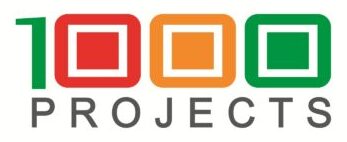Name/Title of the Project
- Travel and tourism analysis data of hotels using the Hadoop environment system.
- Tourist Analysis Using Big Data (Tourist Place Recommendations Dataset)
- Tourism Behaviour Analysis Using Hadoop (Big Data Analysis)
Problem Statement
Throughout the years the tourism industry was dependent on intermediaries, who enabled the interaction between the suppliers and the customers. The internet age changed the complexity of tourism distribution, enabling the entry of new virtual intermediaries characterized by a strong competitive advantage over other players in the sector.
Recommender systems are categorized into
1. Content-based system: With this, item recommendation is analyzed then it retrieves the information and filters this for research. For example, if the tourist goes to hill stations more often, then the database contains “hill station” as a recommendation
2. Collaborative filtering systems: They rely on similar factors of users or items. Preferences of different users for the same item are recommended by the system.
There are many challenges in designing and executing a Personalized Tourist Travel Package Recommendation System.
1. Usually Travel packages are location-based so they are pertained to space or time to reach the destination. For example, the package contains locations that are geographically near and also vary season-wise.
2. The older recommendation method is dependent upon rating and the travel data may not consist of this sort of rating.
Introduction/Feasibility Study
According to the World Travel & Tourism Council, in 2008 travel and tourism were equivalent to 9.9% of the total world GDP. The tourism industry is growing despite all the risks faced in recent years: terrorism, health fears related to avian flu, and high oil prices. The World Tourism Organization (WTO) reports that in 2006 international tourism arrivals reached its record of 842 million: a 4.5% growth compared with the previous year (http://www.unwto.org). This number even exceeded previous long-term forecasts. For the following years, the WTO predicts constant growth, reaching 1.6 billion international arrivals in 2020. According to the WTO, in the last four years, the biggest tourism arrival growth occurred in the Middle East, followed by Africa and Asia, and finally Europe, while a sharp decline has been observed in the Americas. Europe, however, still accounts for the biggest market share of international arrivals. Tourism has thus a great influence on the world economy and it is important for the European market to maintain its leadership position. This can only happen if the industry will keep up with the newest technology innovations and will be able to quickly adopt them. Internet is especially relevant for the tourism industry due to its worldwide coverage, enabling direct worldwide interaction with tourists
Below are the modules required to develop this project and create an application user form:
1. Administrator authentication/module: This module is mainly based on admin.
2. User Registration: This module covers the details about the registration of users they can be registered by themselves by adding data like name, password, email id, and further details.
3. Package Modules: Users can view different tour packages available for tourists.
4. Testimonials module: This is the module where passengers can post feedback after the journey and they can share their experience.
5. Payment & Search Module:
a. Pay payment through PayPal.
b. Pay payment through draft, credit & debit cards, UPI, and net banking.
c. Search city-wise hotels, flights, packages, buses, rails, and events.
6. Routes module; This will display the route information of the source location and destination location. Users can also check the best routes for their destination. From this module user can also get information related to various routes connecting sources and destinations, For each route, information such as source, destination, fare, reservation details, pick-up points, etc. are provided.
7. Reservations module: This module is for passengers/customers where passengers can reserve their seats by making payments.
Hardware & Software Used
Software Used:
1. HADOOP environment system that acts as a tool for analysis & recommendations to tourists.
2. Technology: Java
3. Web Technology: HTML, Javascript, and CSS.
4. Database used: MySQL5.0
Hardware Used:
1. A portable PC or a working laptop.
2. A minimum RAM of 8GB or 32 GB hard disk drive.
3. Intel Core-i5 Processor, 8th Generation(minimum)
With this project, I am developing a tourism management system first by creating a user login and password form with the help of java language and some of the python frameworks which will be used for developing the code and then, giving recommendations on famous tourist places to visit in a particular area or throughout our country(India) based on user’s search history on the system. It will be a simple static web application type system with not that much of looking feel.
